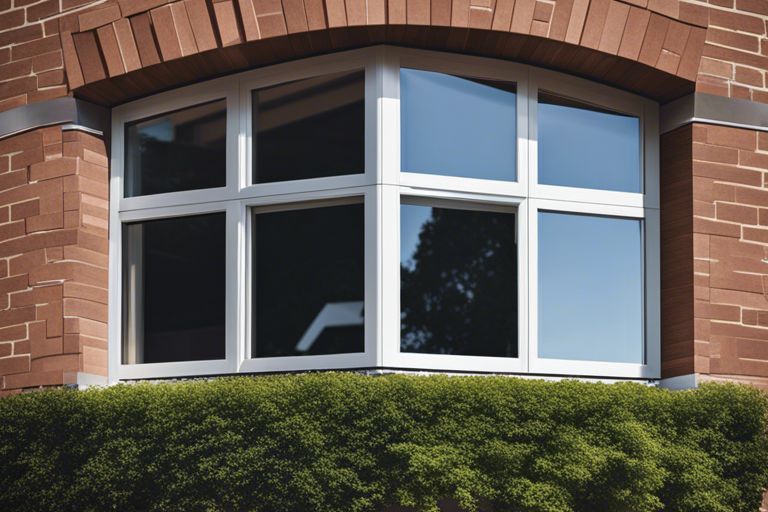Congratulations on taking the first step to improving the energy efficiency of your home with thermal break technology in your aluminium windows and doors. By incorporating this innovative technology into your home, not only will you drastically reduce heat loss and gain, but you will also increase the overall insulation performance of your windows and doors. This means that you can say goodbye to chilly drafts and hello to lower energy bills. In addition to its energy-saving benefits, thermal break technology also improves sound insulation, providing you with a quieter and more peaceful living environment. Whether you are building a new home or renovating your current one, investing in thermal break technology for your aluminium windows and doors is a decision you won’t regret.
Key Takeaways:
- Improved Energy Efficiency: Thermal break technology minimizes heat transfer through aluminium frames, resulting in lower energy costs and improved comfort.
- Condensation Reduction: By reducing the likelihood of condensation forming on windows and doors, thermal break technology helps prevent mold and dampness issues.
- Enhanced Durability: The integration of thermal break technology in aluminium profiles enhances the structural integrity and durability of windows and doors.
- Noise Reduction: The insulation properties of thermal break technology can contribute to a quieter indoor environment by reducing external noise transmission.
- Improved Comfort: With better temperature regulation, thermal break technology helps maintain a more comfortable indoor environment year-round.
- Increased Property Value: Homes and commercial properties with thermal break aluminium windows and doors may be more attractive to potential buyers due to their energy-efficient and high-quality features.
- Sustainability Benefits: Thermal break technology can contribute to a building’s sustainability goals by reducing energy consumption and minimizing environmental impact.
Types of Thermal Break Technology for Aluminium Windows and Doors
Some thermal break technology options for aluminium windows and doors include:
- Polyamide Strips
- Polyurethane Inserts
- Aerogel Insulation
Knowing about these different types of thermal break technology can help you make an informed decision about The Benefits of Thermal Break Windows in Improving Energy Efficiency for your home or building.
Polyamide Strips
Polyamide strips are commonly used in aluminium window and door frames to provide thermal insulation. They consist of a reinforced polyamide material that is inserted between the metal components to create a thermal break barrier. This helps to reduce heat transfer and condensation which can lead to mold growth and structural damage.
Polyurethane Inserts
Polyurethane inserts are another common thermal break technology for aluminium windows and doors. They are made from a foamed insulation material that is inserted into the aluminium framework to provide thermal resistance. This helps to improve energy efficiency by reducing heat loss and heat gain through the frame.
Aerogel Insulation
Aerogel insulation is a high-performance thermal break technology that is becoming increasingly popular for aluminium windows and doors. It is a nanotechnology-based material that has extremely low thermal conductivity, making it highly effective at insulating against heat transfer. Aerogel insulation offers superior thermal performance without adding bulk or weight to the window or door frame.
Factors to Consider When Choosing Thermal Break Technology
Your choice of thermal break technology for your aluminum windows and doors can have a significant impact on the performance, durability, and cost efficiency of your property. Here are some key factors to consider when making this important decision:
- Thermal Performance and U-Values: The ability of the thermal break technology to reduce heat transfer and improve insulation is essential for maintaining a comfortable indoor climate and reducing energy costs.
- Durability and Material Compatibility: It is crucial to ensure that the thermal break technology is compatible with the aluminum frames and other materials used in the windows and doors, to prevent compatibility issues and ensure long-term durability.
- Cost Efficiency and ROI: Consider the initial investment cost of the thermal break technology and weigh it against the potential energy savings and long-term return on investment.
Thermal Performance and U-Values
The thermal performance of your windows and doors is greatly influenced by the thermal break technology used. The lower the U-value, the better the insulation properties, resulting in reduced heat loss and improved energy efficiency. When choosing a thermal break technology, look for options with low U-values to ensure optimal thermal performance.
Durability and Material Compatibility
When considering thermal break technology, it’s important to prioritize durability and material compatibility. Ensure that the thermal break material is resistant to corrosion and can withstand environmental factors, while also being compatible with the aluminum frames and other materials used in the windows and doors. This will ensure the longevity and stability of the entire window and door system.
Cost Efficiency and ROI
Investing in high-quality thermal break technology may require a higher initial cost, but the long-term return on investment can be significant. By reducing energy consumption and improving overall insulation, you can enjoy cost savings over time, making it a financially sound decision. Consider the potential energy savings and weigh them against the initial investment cost to determine the cost efficiency and ROI of the thermal break technology you choose.
Step-by-Step Guide to Installing Thermal Breaks
After understanding the benefits of thermal break technology in aluminium windows and doors, you may be considering installing thermal breaks in your own home. The process may seem daunting, but with the right guidance, you can ensure a successful installation. Here is a step-by-step guide to help you through the process:
Assessing Your Current Windows and Doors
Before you start the installation process, it’s crucial to assess the current condition of your windows and doors. Look for any signs of damage, deterioration, or air leakage. This will help you determine the specific areas where thermal breaks are needed. Remember to measure the dimensions of your windows and doors accurately to ensure that you select the right thermal break solution for your specific needs.
Selecting the Right Thermal Break Solution
When selecting the right thermal break solution, it’s important to consider factors such as the climate in your area, the architectural style of your home, and your energy efficiency goals. Choose a reputable supplier and consult with professionals to determine the most suitable thermal break solution for your windows and doors. Make sure that the solution you select is compatible with your existing window and door frames to ensure a seamless installation.
Professional Installation Tips
When it comes to professional installation, it’s crucial to ensure that the process is carried out with the utmost care and precision. Proper installation is key to maximizing the benefits of thermal break technology. Here are some key tips to consider:
- Ensure that the frames are clean and free from any debris before installation
- Use high-quality insulation materials to prevent air leakage
- Seal all gaps to maintain optimal thermal performance
- Consider hiring a professional installer to guarantee a flawless installation
Knowing these critical tips will help you achieve the best results for your home.
Pros and Cons of Thermal Break Technology
Not all thermal break technology is created equal, and it’s important to consider both the advantages and disadvantages before making a decision. Below is a breakdown of the pros and cons of thermal break technology in aluminium windows and doors:
| Pros | Cons |
| Improved energy efficiency | Potential for higher upfront cost |
| Reduced condensation and moisture build-up | Complex installation process |
| Enhanced thermal performance | Possibility of reduced structural strength |
| Increased comfort and temperature regulation | Limited design options |
| Enhanced sound insulation | Potential for maintenance and repair challenges |
Advantages of Improved Insulation
With thermal break technology, your aluminium windows and doors can provide significantly improved insulation, helping you save on energy costs and creating a more comfortable living environment. The enhanced thermal performance also means that you can better regulate the temperature in your home, resulting in a more enjoyable living space.
Challenges and Potential Drawbacks
While thermal break technology offers numerous benefits, it’s important to acknowledge potential challenges and drawbacks. The complexity of the installation process and the possibility of reduced structural strength may require careful consideration. Additionally, the upfront cost and potential for limited design options should be weighed against the long-term benefits.
The Benefits of Thermal Break Technology in Aluminium Windows and Doors
Considering all points, you can see the substantial benefits of thermal break technology in aluminium windows and doors. With better insulation and reduced heat transfer, these products can significantly increase the energy efficiency of your home or building. Not only does this lead to lower heating and cooling costs, but it also creates a more comfortable indoor environment. Additionally, the durability and low maintenance requirements of aluminium make it a practical and long-lasting choice for your windows and doors. Overall, thermal break technology in aluminium windows and doors offers a range of advantages that can improve the comfort and sustainability of your space.
FAQ
Q: What is thermal break technology in aluminium windows and doors?
A: Thermal break technology involves the use of non-conductive materials to prevent the transfer of heat between the inside and outside of the window or door frame, resulting in improved energy efficiency.
Q: What are the benefits of thermal break technology in aluminium windows and doors?
A: The benefits include reduced energy costs, improved insulation, better soundproofing, and increased overall comfort in the building. It also helps to minimize condensation and prevent heat loss.
Q: How does thermal break technology improve energy efficiency?
A: By creating a barrier between the inside and outside of the frame, thermal break technology reduces the transfer of heat, making it easier to maintain a consistent indoor temperature and reducing the need for heating or cooling.
Q: Are there different types of thermal break technology?
A: Yes, there are several methods for implementing thermal breaks in aluminium windows and doors, including polyamide strips, thermal barrier coatings, and advanced insulation materials.
Q: Are aluminium windows and doors with thermal break technology more expensive?
A: While initial costs may be slightly higher than non-thermal break options, the long-term energy savings and increased durability often make them a more cost-effective choice.
Q: Do thermal break windows and doors require special maintenance?
A: No, they do not typically require any special maintenance. They can be cleaned and maintained in the same way as standard aluminium windows and doors.
Q: Can thermal break technology be added to existing aluminium windows and doors?
A: It is possible to retrofit existing aluminium windows and doors with thermal break technology, but it is best to consult with a professional to determine the best approach for your specific situation.






